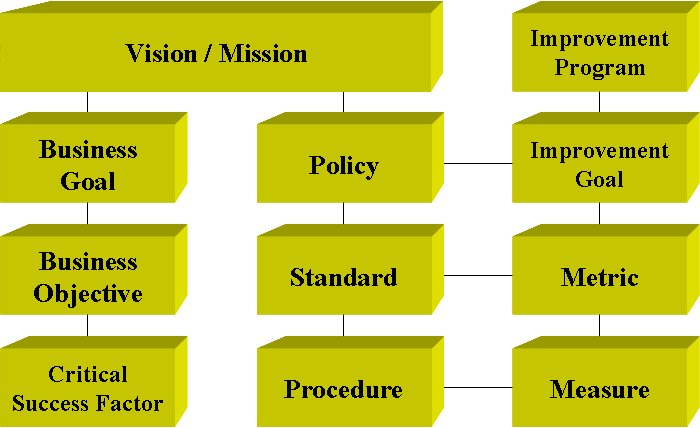|
DOQS ORGANIZATIONAL DEVELOPMENT SERIES
Mission-Focused Planning
Failure to identify the business context for process improvement results
in the adoption of solutions that can fail to resolve genuine underlying
problems. Why is so much money and time being spent on process improvement
programs that do not result in improvements? What is the missing link?

The Goal-Oriented Framework in this seminar provides the missing link.
This seminar offers management a perspective on how to set a direction
for the organization to drive the initiation of a process improvement
program. It teaches managers and staff how to effectively articulate
a vision and mission statement for their organization; how to define
business goals and objectives to support the mission and promote the
vision; and how to translate those objectives into critical success
factors for deployment to process improvement teams.
This seminar:
- Explores the factors that influence an organization's desire or
need to improve.
- Describes the models and solutions typically adopted and describes
reasons for failure in the absence of a clear direction for improvement.
- Explains the Goal-Oriented Framework and how this framework provides
the link among business direction, process maturity, and process improvement
initiatives.
- Describes how to articulate a sound vision and mission statement
and define why most existing statements fail to achieve the desired
results.
- Stresses the importance of clearly defined goals that cover the
breadth of the mission statement, and covers how to realistically
weight the goals and target implementation based on existing organizational
capabilities.
- Explains how to translate goals into resources, time frames, and
steps needed to effectively implement process change initiatives.
- Explores how the business objectives and critical success factors
get deployed through management policies and implementation of a formal
improvement program.
Recommended Audience: CEO/CIO’s, Technology Directors, and senior
IT management and staff responsible for establishing process improvement
programs in their organization.
Outline
- WHAT PROCESS IMPROVEMENT ENTAILS
- THE GOAL-ORIENTED FRAMEWORK
Dynamic Feedback Loops
- VISION & MISSION
Systems Theory Implications
- BUSINESS GOALS
Core Competencies
The 3-Futures Model
- BUSINESS OBJECTIVES
Critical Success Factors
- DEPLOYING IMPROVEMENT
Organizational Friction
Management vs. Staff Roles
|




